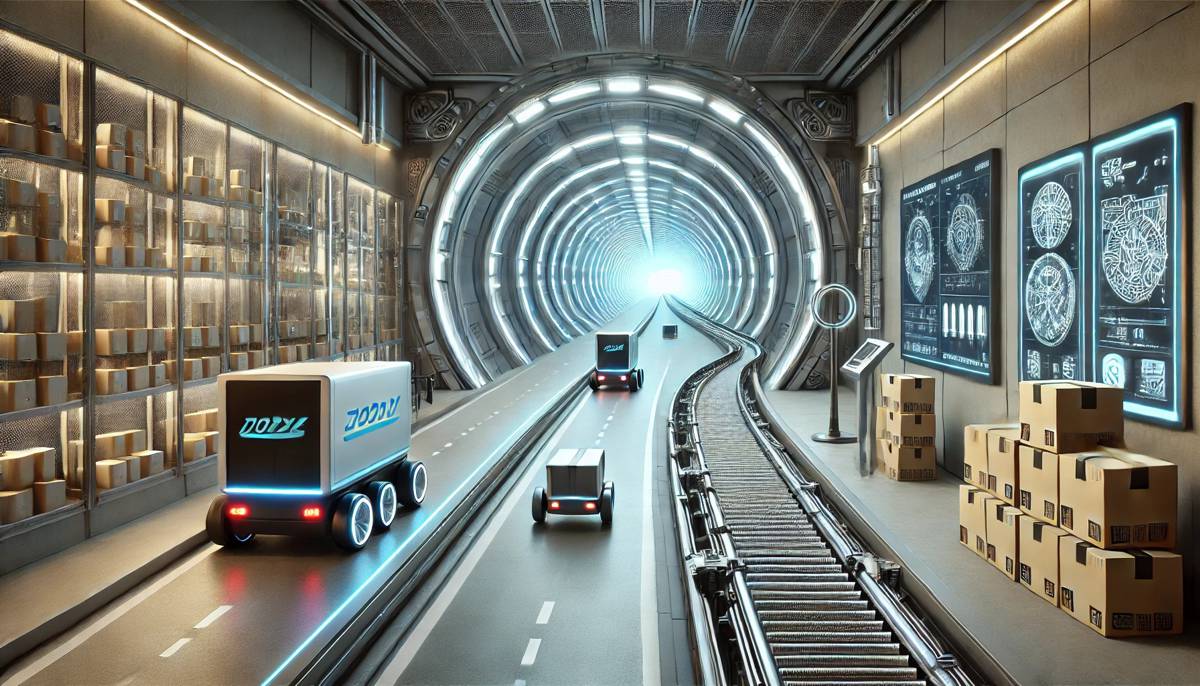Japan’s 310 mile Conveyor Belt could revolutionise Freight Transport
The Japanese government has set its sights on a ground-breaking initiative that promises to transform the country’s logistics landscape.
This audacious project, the Autoflow-Road, aims to establish a network of hi-tech, automated conveyor belts stretching 310 miles (500 kilometres) between Tokyo and Osaka. As Japan grapples with a severe delivery driver shortage and mounting freight demands, this innovative solution could prove to be a game-changer.
Addressing the Logistics Crisis
Japan’s Ministry of Land, Infrastructure, Transport, and Tourism (MLIT) recently announced this ambitious plan, highlighting its potential to mitigate the looming logistics crisis. The Autoflow-Road project, designed to ensure the efficient and continuous movement of cargo, could significantly alleviate the strain on Japan’s delivery system.
Shuya Muramatsu, a senior official in MLIT’s road economics research office, underscored the project’s significance. “Automated logistics roads are designed to get the most out of road space by utilizing hard shoulders, median strips [central reservations], and tunnels beneath the roadway,” he explained.
A Green Initiative
Beyond addressing logistical challenges, the Autoflow-Road also aligns with Japan’s environmental goals. The project aims to reduce greenhouse gas emissions (GHGs), leveraging existing road space more efficiently. By incorporating tunnels, median strips, and hard shoulders, the project seeks to minimize the environmental footprint of freight transport.
Muramatsu further elaborated on the environmental benefits, stating: “Our study is examining the impact on road traffic, including on surrounding roads, and costs.” This comprehensive approach ensures that the Autoflow-Road is not only practical but also sustainable.
Innovative Design and Infrastructure
The Autoflow-Road system is still in the planning phase, but its proposed design is nothing short of revolutionary. Automated conveyor belts will be installed in tunnels beneath major highways, on above-ground tracks in the middle of roads, and along hard shoulders of motorways. This multifaceted approach maximizes the use of available space while minimizing disruption to existing traffic.
Transport Minister Tetsuo Saito, speaking at the project’s unveiling, highlighted the multifaceted benefits of the Autoflow-Road. “The Autoflow-Road will not only address the logistics crisis but also help to reduce greenhouse gas emissions. We would like to speedily proceed with discussions on the matter,” Saito remarked.
Challenges and Considerations
While the Autoflow-Road promises numerous benefits, it also presents several challenges. The project’s impact on road traffic, surrounding infrastructure, and overall costs are critical considerations. Muramatsu emphasized the importance of a thorough analysis to ensure the project’s feasibility and effectiveness.
To address potential disruptions, the government plans to conduct extensive studies and simulations. These will help anticipate and mitigate any adverse effects on existing road users and local communities.
Economic Implications
The Autoflow-Road project has significant economic implications. By streamlining freight transport, it could reduce costs for businesses and consumers alike. Faster and more efficient logistics could boost Japan’s economy, enhancing competitiveness in the global market.
Moreover, the project could create new job opportunities in construction, maintenance, and technology sectors. As Japan continues to innovate, such initiatives underscore its commitment to economic growth and sustainability.
International Impact
Japan’s Autoflow-Road project is garnering international attention. If successful, it could serve as a model for other countries facing similar logistics challenges.
The project’s innovative use of technology and infrastructure could inspire global advancements in freight transport.
Looking Ahead
As Japan embarks on this ambitious journey, the world watches with keen interest. The Autoflow-Road project embodies the spirit of innovation and resilience that defines Japan.
By addressing logistical challenges and environmental concerns, it sets a precedent for future infrastructure projects.




















